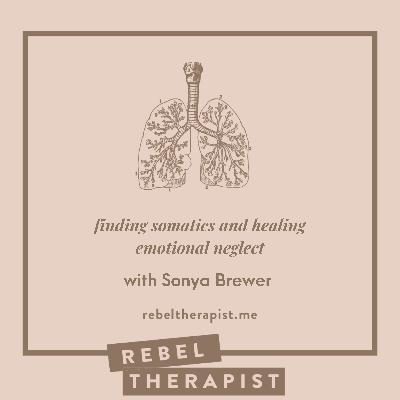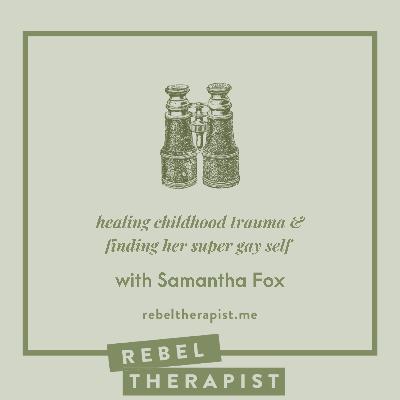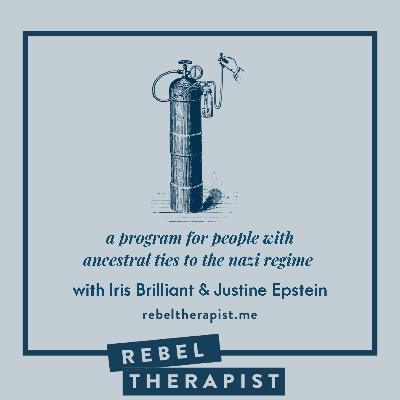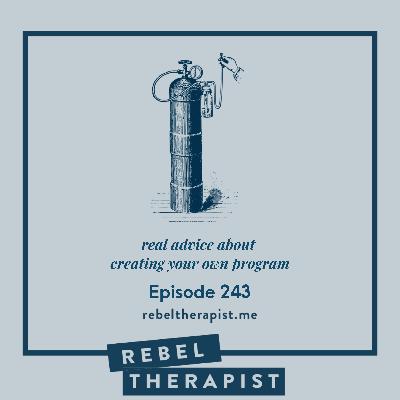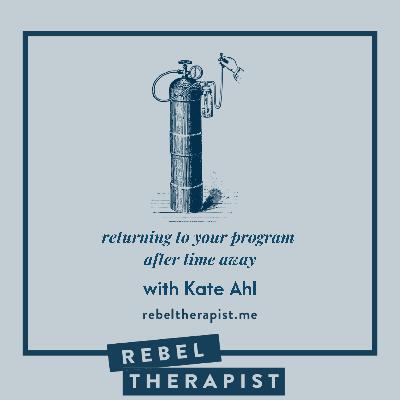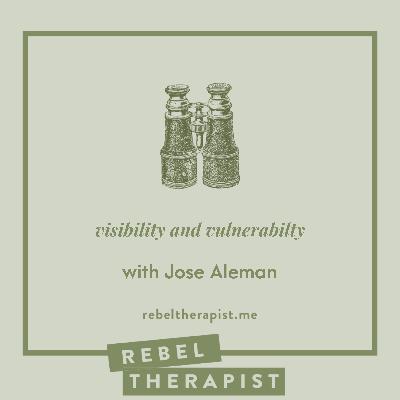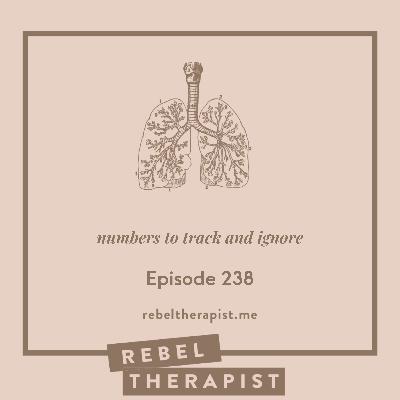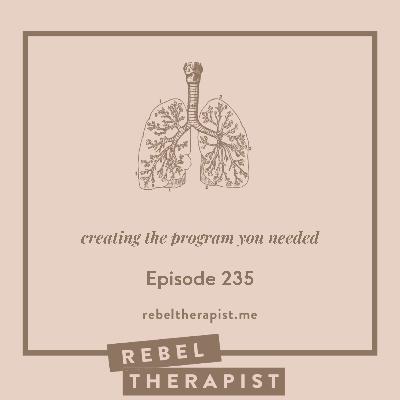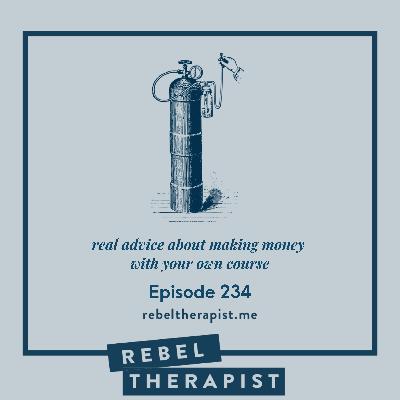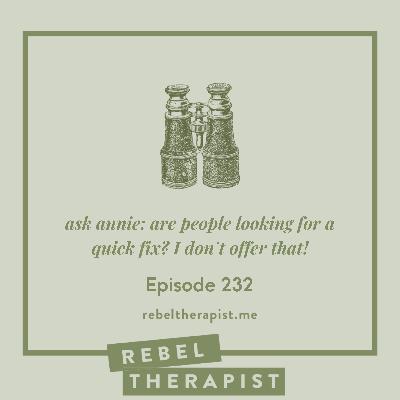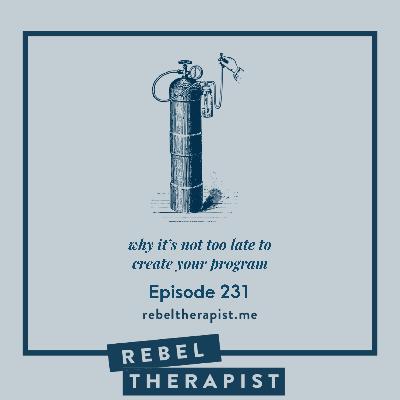How Can I Run Great Group Calls?
Description
Today I’m talking about how to run engaging and effective group calls in your signature program, rather than calls that leave people bored or frustrated or just not showing up.
When I say PROGRAM, I’m talking about a niched, outcome oriented, structured container. Your program might be a workshop, retreat, group coaching program, course, or some hybrid of different formats.
These are the kinds of programs that are always in demand because they actually help people make significant transformations. I’m not talking about flimsy self-led courses here. I’m talking about programs where your participants get to interact with you in a meaningful way.
Therapists and healers make the best programs. We’ve got training and experience in how to help people get from point A to point B. We know how to work with resistance, emotions, and all of the other things that make change difficult.
If you’ve been a participant in a lot of programs, you know that some group leaders have no idea what they’re doing!
You as a therapist or healer have the potential to be a very skilled group leader for your program.
BUT there’s some stuff that therapists also need to learn about running calls in their structured, niched and outcome oriented programs.
A question I get a lot is: “How can I facilitate group calls well in my new program?”
And I’m excited to share my answer with you here.
THE TROUBLE WITH THERAPISTS
Our biggest mistakes as therapists are that we tend to run our program calls like group therapy sessions when we need to be doing something different.
I’ll use myself as an example. I really fucked this up at the beginning.
In the beginning, I ran my program calls a lot like group therapy sessions, and that wasn’t what my business coaching program needed.
I tended to go towards depth and bigger emotional material because I was comfortable there and that’s what I was used to doing with groups. I had been moving that way during years and years of working as a therapist.
If a person brought up feeling stuck in perfectionism or imposter syndrome, I’d expand and encourage that conversation to the point that it took up most of the session. Then I’d try to rush through some business concepts.
I didn’t know how to balance that beautiful depth with the need to direct the group towards the goal of the program.
My group calls left people feeling understood, bonded to others in the group, and probably with less shame about their experiences. The calls didn’t give the participants enough help with taking strategic steps in their businesses.
Were the calls bad? It depends what you think the purpose of the calls was. People who primarily wanted space to process about their emotions about their businesses probably thought the calls were great. People who wanted to move forward with strategy probably felt frustrated.
Lots of participants probably felt pretty good about the calls while they were happening, but then bummed out at the end of the program that we hadn’t gotten enough business stuff done.
As therapists, we still get to use our attunement skills, but we need to harness them differently.
The problem was that I hadn’t chosen ONE clear purpose for my calls.
CHOSE A PURPOSE
That brings me to one of my favorite thought leaders around running groups: Priya Parker. She’s an author and a facilitator, and she’s NOT a therapist.
Her book, The Art Of Gathering, has changed how I think about groups forever.
Priya Parker says that for any gathering, you need to choose ONE clear purpose.
You definitely need one clear purpose for your program.
The purpose of your program is the outcome it helps people move towards.
For example: Let’s pretend your program helps couples in blended families to strengthen their relationships. (That’s a juicy niche by the way. Grab it if you want!)
This program is designed to get the couple from point A to point B.
Point A is where the couple is now, feeling distress in their bond. point B is feeling stronger in their relationship.
Every single decision you make about your program should be in service of helping your couples towards the goal of a stronger relationship.
Your whole program has a purpose.
Within that program, each of the group calls needs to have one clear purpose as well.
For each session, you can ask yourself: “What is the one thing that this call needs to do well?”
Is the purpose of each meeting to internalize a concept? To feel connected to other participants? To hear each other’s stories?
Choose ONE purpose to build the call around.
Yes, they’ll get additional benefits out of those meetings too.
But choosing just one purpose saves us from this bias we all tend to have. We overestimate our ability to prioritize lots of things at once and do all of them well.
That’s when calls get boring and frustrating for the participants, and you notice that people stop showing up.
That’s also when you as the leader get stressed out and maybe even resentful. You’re trying to do SO much and it’s not working.
Here’s something I hate to hear from the leader at the beginning of a workshop or a meeting:
“We’ve got way more stuff to cover than we have time for!”
We’ve all learned to humble brag about being over committed and doing too much, but when a group call doesn’t have enough time to accomplish the goal, it’s just not as valuable.
RUN YOUR CALLS IN A WAY THAT PROTECTS THE PURPOSE
Once you know the purpose of the program and specifically of each of calls, it’s your job to protect that purpose.
When people signed up for your program, you promised them a process to get from point A to point B.
I’m gonna talk about some things you can do in structuring your calls to make that happen.
THINGS TO DO ON THE FIRST CALL
Your first meeting will be different from the subsequent ones because the purpose of the first call is to get everyone set up for success in the program.
(If what you’re running is a multi-hour workshop or a retreat, this applies to the beginning of that event.)
Start on time. If you wait to start until everyone has arrived, people will take that cue and show up late next time.
Don’t start the first meeting with logistics because that’s a missed opportunity.
Start the very first moment of the very first meeting with something that brings people into more presence.
Logistics can be the second thing you do.
You might start with a breathing exercise, an inspiring story, or a simple experiential exercise.
Name and ask for acknowledgement of group agreements.
Ask participants to share other desired agreements, and allow them to email you with suggested additions if they don’t want to bring them up in the group.
Tell people how you’d like participants to behave on the group calls.
Talk explicitly about what’s in the range of desired behavior, including things like eating, turning their cameras off, coming late or leaving early. There’s no one right answer to these things, so you need to tell them what’s expected here.
Model taking care of yourself. For example, take a sip of water and stretch when you need to.
Tell people to expect that you’ll interrupt them sometimes, always with loving kindness, because you’re going to be driving this bus towards a particular direction.
Tell people what kinds of feedback or comments are welcome.
Unlike in a therapy group, their feedback to each other might not be the priority on these calls. If that’s the case, tell them.
Tell them how to get the most out of these calls and the whole program.
If there’s homework, give them a sense of how much time that will take, and help them plant seeds for themselves about how they’ll get that done and what they’ll do if they fall behind.
STRUCTURING THE REST OF YOUR CALLS
Start with a ritual in each meeting to help people arrive.
Briefly tell people after that ritual what will happen during that call. When that plan changes partway through the call, acknowledge that you’re pivoting. They won’t care that you’re pivoting. They’ll just be glad you’re still driving the bus.
If you’ve got multiple group calls, a structure that often works well is one portion for teaching, then a portion for spotlight coaching or discussion.
90 minutes tends to be a good length for calls where both teaching and discussion and coaching happen.
If you’ve got 6 people or more, breakout rooms of 2 or 3 people can be a helpful tool for discussion. When you use breakout rooms, give them a prompt and tell them to use the time as feels best.
When you’re teaching something, teach! Keep the focus rather than going into too much discussion in the middle of teaching.
Every time you teach a concept, include something experiential so that participants can grapple with what they’re learning.
That could be as simple as pausing for silent reflection or journaling. You could fill in a worksheet together. You could lead folks through a visualization.
Try to show a visual like a slide every time you teach a big concept.
You might include spotlight coaching in place of or in addition to more open ended group discussion. This might move you away from your comfort zone if you’ve been a group therapist. In spotlights, you coach one person in front of the group. If you’ve got a lot of expertise in this topic, and people have paid big bucks to learn from you, so don’t shy away from spotlight coaching.
Sometimes therapists are so used to saying “you’re the expert on you” or “the group has all the wisdom” that we don’t step into our authorit


